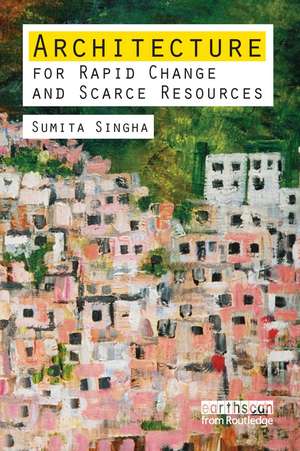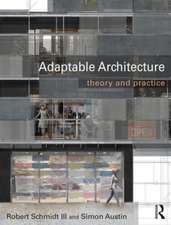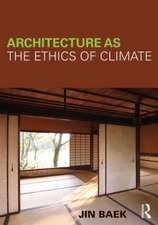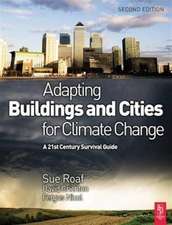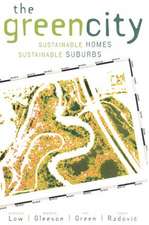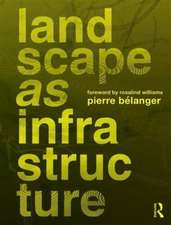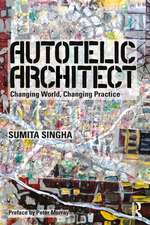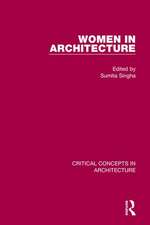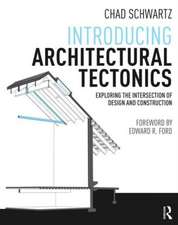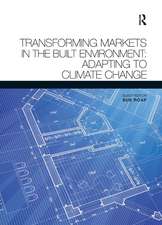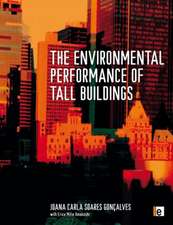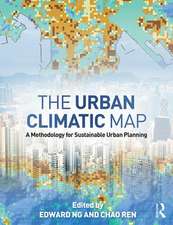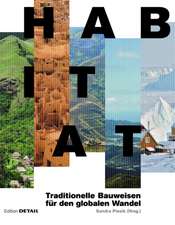Architecture for Rapid Change and Scarce Resources
Autor Sumita Singhaen Limba Engleză Paperback – 15 feb 2012
This book explores what it means for development activists to practise architecture on a global scale, and provides a blueprint for developing architectural practices based on reciprocal working methods. The content is based on real situations - through extended field research and contacts with architecture schools and architects, as well as participating NGOs. It demonstrates that the ability to produce appropriate and sustainable design is increasingly relevant, whether in the field of disaster relief, longer-term development or wider urban contexts, both in rich countries and poor countries.
| Toate formatele și edițiile | Preț | Express |
|---|---|---|
| Paperback (1) | 399.03 lei 43-57 zile | |
| Taylor & Francis – 15 feb 2012 | 399.03 lei 43-57 zile | |
| Hardback (1) | 1342.55 lei 43-57 zile | |
| Taylor & Francis – 17 feb 2012 | 1342.55 lei 43-57 zile |
Preț: 399.03 lei
Nou
Puncte Express: 599
Preț estimativ în valută:
76.38€ • 82.99$ • 64.20£
76.38€ • 82.99$ • 64.20£
Carte tipărită la comandă
Livrare economică 21 aprilie-05 mai
Preluare comenzi: 021 569.72.76
Specificații
ISBN-13: 9781849711166
ISBN-10: 184971116X
Pagini: 320
Ilustrații: 136 black & white halftones
Dimensiuni: 156 x 234 x 20 mm
Greutate: 0.68 kg
Ediția:1
Editura: Taylor & Francis
Colecția Routledge
Locul publicării:Oxford, United Kingdom
ISBN-10: 184971116X
Pagini: 320
Ilustrații: 136 black & white halftones
Dimensiuni: 156 x 234 x 20 mm
Greutate: 0.68 kg
Ediția:1
Editura: Taylor & Francis
Colecția Routledge
Locul publicării:Oxford, United Kingdom
Cuprins
Foreword by Nick Baker. Preface Part 1 1. Introduction: Architecture of Rapid Change and Scarce Resources 2. Big Games and Small Money 3. Gypsies, Tramps and Thieves: The Story of Cities and Slums Part 2 4. Materials and Technology 5. Learning from Tradition: Sustainable Cities 6. Participatory Design for Scarce Sources and Rapid Change Part 3 7. Culture, Ethics and other Traveling Discomforts 8. Observing and Recording the 'Soft' City Tools and (Cautionary) Tales 9. The Development Activist and New Ways of Working. Appendix. Further Contacts and References.
Notă biografică
Sumita Sinha is a practising architect and teacher, who has worked in India, Serbia, France, Spain, Venezuela and the UK. Sumita is the founder of Architects For Change, the Equality Forum at the Royal Institute of British Architects. Sumita is the recipient of many awards including the UIA:UNESCO International Design Award and the Atkins Inspire Award 2008.
Recenzii
This thought provoking book links the structured world of buildings and design with the chaotic world of fluidity and diversity, bringing community participation in design into the centre of any planning process, even at a time of rapid change and resource scarcity. Reconciling the need for swift action with participatory processes is a challenge but as Sinha shows, this brings about the most sustainable solution and creates the most value. The book provides practical tips and advice and provides a good overview for students of architecture, those engaged in urban planning, as well as the development activist. Nicole Kenton, International Institute for Environment and Development
This book identifies the need for cultural sensitivity in design and architecture, as well as wider development practice, as a result of the challenges of operating in an increasingly global environment. In an in-depth exploration of culture and perception, Sinha rightly acknowledges that respect and professionalism are central to effective working practice as development practitioners. This book helps readers to understand the challenges of operating in a different cultural context and through poignant recommendations asks us to examine our own preconceptions of ourselves and of others. Article 25
At a time when modern architecture in the west has long since lost its social purpose and become the brand style of corporate capitalism, a now diminishing brand, this timely book offers a new prospect of an enlightened architectural future. Professor Mike McEvoy, University of Brighton
This will hopefully be a wake up call for the architectural profession, and its education system, to re-establish its fundamental political, social and environmental responsibilities.More important perhaps, and more difficult, is the book's emphasis on the need to ask questions and create connections, to gain a deeper understanding of the inseparability of all life on this extraordinary planet. You may not agree with every sentence in the book but you must read it and at the very least begin to acknowledge some of the critical issues it raises about the future of human society. Roger Kelly, former Director of the Centre for Alternate Technology.
This book identifies the need for cultural sensitivity in design and architecture, as well as wider development practice, as a result of the challenges of operating in an increasingly global environment. In an in-depth exploration of culture and perception, Sinha rightly acknowledges that respect and professionalism are central to effective working practice as development practitioners. This book helps readers to understand the challenges of operating in a different cultural context and through poignant recommendations asks us to examine our own preconceptions of ourselves and of others. Article 25
At a time when modern architecture in the west has long since lost its social purpose and become the brand style of corporate capitalism, a now diminishing brand, this timely book offers a new prospect of an enlightened architectural future. Professor Mike McEvoy, University of Brighton
This will hopefully be a wake up call for the architectural profession, and its education system, to re-establish its fundamental political, social and environmental responsibilities.More important perhaps, and more difficult, is the book's emphasis on the need to ask questions and create connections, to gain a deeper understanding of the inseparability of all life on this extraordinary planet. You may not agree with every sentence in the book but you must read it and at the very least begin to acknowledge some of the critical issues it raises about the future of human society. Roger Kelly, former Director of the Centre for Alternate Technology.
Descriere
This book explores what it means for development activists to practise architecture on a global scale, and provides a blueprint for developing architectural practices based on reciprocal working methods. The content is based on real situations – through extended field research and contacts with architecture schools and architects, as well as participating NGOs. It demonstrates that the ability to produce appropriate and sustainable design is increasingly relevant, whether in the field of disaster relief, longer-term development or wider urban contexts, both in rich countries and poor countries.
